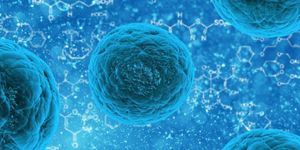While most bacteria is harmless, some have evolved into pathogens, which have various ways of causing infectious disease. Investigators at Umeå University in Sweden have now discovered that some bacteria are able to multiply specific genes which are required for causing infection, thus inducing disease.
Over 22 years ago, researchers at Umeå were the first to determine the infection strategy of Yersinia bacteria, a human pathogen which has a protein structure in the cell walls that resembles a syringe. The structure, called "Type III secretion system" or T3SS, enables the transfer of bacterial proteins into a host cell, destroying its metabolism.
After that discovery, scientists have found T3SS in other species of bacteria, proving T3SS to be a common mechanism of infection mechanism that pathogens, such as a virus or virulent bacterium, use to destroy host cells. Umeå researchers have now found the link between disease and rapid production of the proteins required to form the so-called poisonous syringe. An overview of the T3SS mode of action is shown in the video below from Garland Science.
In collaboration with researchers at the Helmholtz Centre for Infection Research in Braunschweig, Germany, the team investigated the infection strategy of Yersinia pseudotuberculosis. Closely related to the deadly plague bacterium, this microbe can cause acute diarrhea, stomach pains and vomiting and stomach pains. The genes the bacteria need for infection are located on a circular extra chromosome, called a virulence plasmid.
First, the investigators studied infected human cells in culture, then confirmed the findings with animal models. They learned that a lone copy of the virulence plasmid could not induce infection, but when the Yersinia bacteria came in contact with host cells, a "copying machine" was triggered, increasing the number of plasmids. So, for the first time researchers have shown that an increased amount of plasmid-encoded genes is required for the establishment of infection by pathogenic bacteria.
"Yersinia has developed a very clever strategy," says postdoctoral fellow Helen Wang and first author of the
study that reported their findings in Science. "To carry a great number of plasmids, the bacteria need a lot of energy and it negatively affects the bacteria's metabolism and growth. But having one copy of the plasmid as a blueprint that can be rapidly amplified in case of infection is a very clever solution. Many copies of the plasmids give bacteria the opportunity to build up many T3SS and all the proteins needed to quickly knock out host cells during an infection," explains Wang.
"Our study represents a breakthrough in which we show that gene-dosage of plasmid-encoded genes is a fast regulatory strategy used by bacteria. This discovery will contribute to increased insights into bacterial resistance to antibiotics, and is a major step forward in our understanding of how bacteria cause disease," says Research Engineer Tomas Edgren, who led the study along with Professor Hans Wolf-Watz.
Sources:
AAAS/Eurekalert!,
Garland Science,
Science










